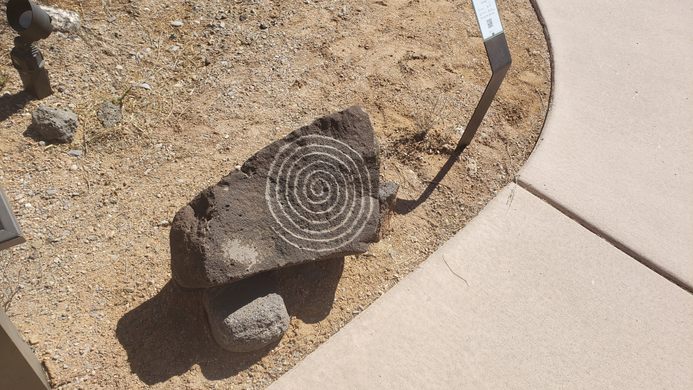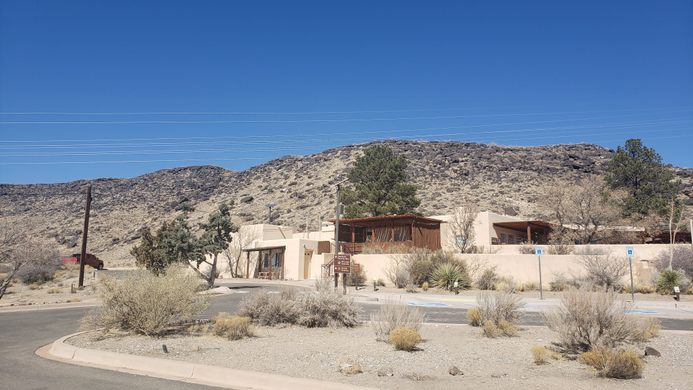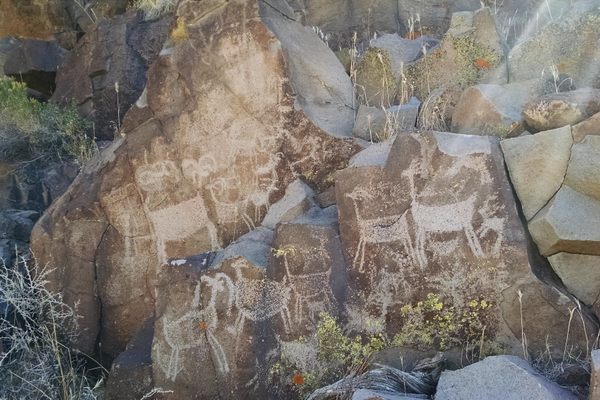AO Edited
Petroglyph National Monument
Thousands of pieces of art have been carved into the rock at the site of an ancient volcanic eruption.
Extending along 17 miles of volcanic basalt escarpment in central New Mexico are some 24,000 petroglyphs. Most date back to 1300–1600, a time when the Ancestral Puebloans, the ancestors of today’s Pueblo peoples, were building adobe villages along the Rio Grande River.
The petroglyphs depict stylized human figures, animals, stars, spirals, geometric shapes, and a bewildering number of abstract figures. Although not always decipherable, undoubtedly reflect the aspects of Ancestral Puebloan social, religious, and cultural life and heritage. The images and the land that contains them are deemed to have a spiritual and sacred significance to contemporary Native Americans and should be respected and undisturbed.
Archaeologists have estimated that some of the carvings were created as far back as 3,000 years ago. These older petroglyphs are primarily found in the Boca Negra Canyon area.
The petroglyphs are inscribed on volcanic basalt boulders that emanated from lava flows escaping ground fissures and five volcanic cones, which are easily seen along Albuquerque’s western skyline. The most recent of these volcanic eruptions occurred 150,000 to 200,000 years ago—an extremely recent event in geologic terms.
Basalt contains high concentrations of iron and manganese, which make the boulders particularly susceptible to oxidation upon exposure to oxygen. This process, over many millennia, produced a thin and dark, almost black patina of iron and manganese oxide that is also called “desert varnish.” It covers all the exposed surfaces of the basalt boulders. Utilizing stone chisels and hammer stones, artists created petroglyphs by chipping away the patina on the rock surfaces, exposing the unoxidized, lighter-colored rock beneath the surface.
Petroglyph National Monument encompasses seven miles of escarpment containing thousands of petroglyphs on 7,244 acres, making it one of the largest ancestral petroglyph sites in the country. To protect and preserve these invaluable sources of Pueblo heritage, visitors are limited to three relatively short trails located within separate and non-contiguous canyons.
Know Before You Go
The Visitor Center at Petroglyph National Monument is remote (1 - 6 miles) from any of the actual hiking trails, but it is the recommended place to start. Here you will find brochures, maps and specific driving directions to the various petroglyph trails. The Visitor Center is located on Unser Boulevard approximately 2 miles north from the I-40/Unser Blvd. interchange. The trails are largely undeveloped but generally flat and easy to navigate. Bring water.























Follow us on Twitter to get the latest on the world's hidden wonders.
Like us on Facebook to get the latest on the world's hidden wonders.
Follow us on Twitter Like us on Facebook